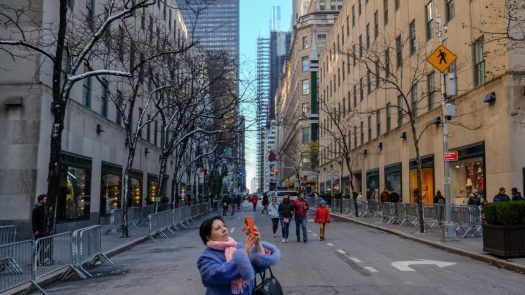Hello friends of Asbury Park Complete Streets Coalition,
Hoping that you’ve all been safe and healthy during these winter months.
In a communication today with The City Of Asbury Park administration we discussed the removal of bollards during the recent mini, almost non-snow storm, and the delay of DPW putting them back because of the threat of another (zero) snow event. Instead of being taken away with the first forecast of snow and stored for the entire winter (snow or not) as in previous years, they were moved to the side of the roads, But it’s taken time to get them back in place where they do a critical service making streets safer for people walking and rolling. Essentially putting peoples’ safety at risk while protecting plows and bollards.
City officials too often neglect to improve road infrastructure, using snow plowing as the excuse that mini-roundabouts, curb extensions, (aka “bulb outs), speed bumps, pedestrian islands will impede plows.
First, safety road improvements can easily be designed not to interfere with plowing.
Second, the snow in our area is negligible, but even in cities where there is snowfall, it can be beneficial to safety with the snow itself creating a road narrowing effect, called a “sneckdown”,
The “portmanteau mashes up “snow” and “neckdown,” an engineering term for a sidewalk extension or street island designed to damper drivers.”
This is what happened in Asbury Park when one bollard was not removed during a snowfall. It’s a snowy mini-roundabout, creating a road-narrowing, traffic calming effect.
In addition to being a snowy safety measure, DPW wouldn’t have to spend time picking bollards up and putting them back.
Recently across the US there have been advocate and administrative meetings, and articles published about how to quickly implement measures to make our streets safer.
On Jan. 25th I attended a great meeting with the NJ Bike & Walk Coalition SAFE Network “Streets Are For Everyone”.
The topic of the SAFE Network meeting was Quick Build Demonstration Projects.
Advocates from several municipalities shared projects they’ve completed, most with with help from technical assistance grants.
This Free Complete Streets Technical Assistance grant expires Feb. 2nd. We do not know at this time whether Asbury Park has submitted an application.
Crashes occur regularly in the city, especially during the tourist season. I’ve seen the aftermath on multiple occasions, and I’ll be some of you readers have too.
We don’t know current crash data in Asbury Park, or numbers of injuries or deaths.
We do know that there’s a terrible speeding problem in Asbury Park.
Some residents have protested traffic calming measures like speed bumps and mini traffic circles with the mistaken belief that they’ll lose street parking. So far no other prescribed solutions have been installed, and we don’t know of projects slated for implementation. (Not for lack of inquiring, so we’ll let you know when we find out.)
We know that “Quick Build” tactical urbanism projects work to make streets safer.
Take a look at Red Bank’s report on their project.

The NJBWC meeting was right in line with an opinion piece in the Washington Post yesterday, by Janette Sadik-Khan, former Transportation Director on NYC, and Kate D. Levin.
Gift article: Washington Post: Want safer streets? Paint them.

Lastly, a piece was published today in Strong Towns:
No One Should Be the Second Person To Die on a Dangerous Street
As I noted above, we don’t know whether there have been recent injuries or deaths on Asbury Park streets.
Many streets are poorly lit, like intersections on Memorial Drive and other streets are wide and invite speeding.
Do any of the city leaders walk or ride a bike throughout the city day or night, and have a true sense of this reality that many people face every day?

Here’s a great example taken from the Strong Towns article showing before and after, how a simple paint project can make an intersection safer.
 We do have the power to make our streets safer, and in doing so save the lives of people in our communities.
We do have the power to make our streets safer, and in doing so save the lives of people in our communities.
It had been true for many years, according to the previous traffic engineering guide, that cities had to adhere to specific standards in street design to allow for the movement of vehicles over the safety of people, including requiring a certain number of fatalities in order for infrastructure to be built.
This guide, the Manual Of Uniform Traffic Control Devices has been updated, allowing municipalities much more leeway in making changes for safety.
There is grant money available to do Quick Build projects, and the projects themselves are not costly – usually only paint, then easy next steps as described in the featured articles.
What is Asbury Park Waiting for?
Onward.
Polli Schildge, Editor















